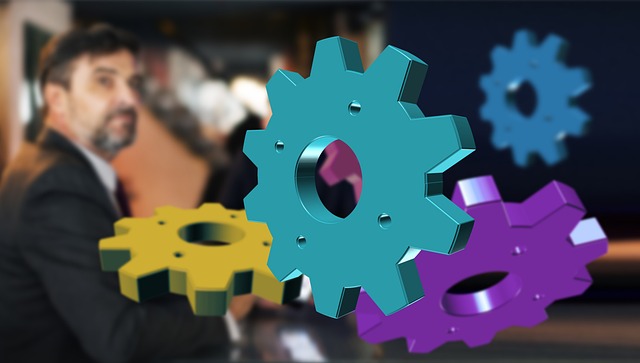Key Takeaways for Pharmacists Seeking Pharmacy Software:
- Security and Trust: Strengthen patient trust by storing sensitive health data on a decentralized, tamper-resistant ledger.
- Data Access and Efficiency: Quick, shared access to updated patient records diminishes delays, letting you focus on patient care.
- Proof of Authenticity: Track medications from manufacturers to your shelves, ensuring authenticity and boosting patient confidence in product quality.
- Reduced Administrative Hassles: Streamline insurance claims and staff credentialing, freeing up valuable time for consultation and clinical advice.
- Future-Proofing: Gain a foothold in the next wave of digital healthcare, where real-time data sharing, smart contracts, and advanced analytics converge to promote better patient outcomes.
Pharmacists worldwide are increasingly expected to balance multiple roles—clinical advisor, medication specialist, patient advocate, and business manager. Today, every process needs to be well-organized, from handling medication records and patient data to coordinating with insurers and other healthcare entities. As digital tools keep growing in sophistication, the medical industry has seen tremendous shifts in how data is stored, shared, and secured.
A particular concept—blockchain technology—is quickly gaining traction in healthcare, including pharmacy operations. Although it is commonly linked to cryptocurrency, blockchain holds much greater potential. With properties that ensure traceability, immutability, and transparency, this technology can significantly bolster data integrity in medical transactions.
What is Blockchain Technology in Healthcare and Why Should Pharmacists Care?
Blockchain—a decentralized digital ledger—logs and stores peer-to-peer transactions in a transparent yet secure manner. Each transaction or data entry is bundled into a “block,” then cryptographically protected and added to a chain of previous blocks. One of blockchain’s defining characteristics is that once something is recorded, altering it is next to impossible because the network uses consensus among its nodes (computers) to verify and replicate these blocks across multiple locations.
In simpler terms, think of blockchain as a widely shared spreadsheet that gets updated in real-time. Whenever new data is added, every participant in the network sees the same data, and no single user can unilaterally manipulate the record. Every change is visible to anyone with permission to view the chain.
How Does This Apply to Pharmacists?
Pharmacists handle sensitive health information daily, from prescription details and insurance claims to confidential patient consultations. They also manage supply chain aspects, especially in hospital pharmacies or large networks where medication procurement and inventory tracking are continuous processes. With blockchain, pharmacists can benefit from:
- Data Security: A major advantage is blockchain’s tamper-resistant design, which ensures that patient data, prescriptions, and insurance details remain intact and protected.
- Real-Time Updates: Because every authorized participant gets an updated, synchronized copy of the ledger, pharmacists can reduce communication gaps with prescribers, wholesalers, and insurers.
- Efficiency in Record Sharing: Pharmacists often need quick access to a patient’s healthcare record to make informed clinical decisions. Blockchain’s decentralized structure enables smoother and more timely data sharing.
In short, whether you manage a community pharmacy or operate in a hospital setting, blockchain technology in health care has the capacity to fortify data handling, reduce duplicate efforts, and grant better oversight of critical information in ways that traditional systems may struggle to match.
Current Advances in Healthcare Technology
Beyond Blockchain
The last decade has seen a surge in other digital health tools. These include:
- Big Data: Large pools of patient data are now analyzed to uncover trends, identify best practices, and forecast potential public health crises.
- Artificial Intelligence (AI): AI-powered platforms aid in diagnosing diseases, anticipating medication non-adherence, and automating monotonous tasks.
- Internet of Things (IoT): Wearable devices and sensors collect live patient data, alerting providers to abnormal vitals or environmental triggers.
Pharmacy software solutions often integrate with such technologies to help pharmacists keep track of inventory, remind patients to refill, prevent dangerous drug interactions, and support medication therapy management. Although these developments allow for more precise and efficient patient care, various security and interoperability challenges arise as these digital tools become more common.
Enter Blockchain
While many pharmacists are familiar with Big Data, AI, or IoT, fewer have explored how blockchain can be used in healthcare to secure data, confirm authenticity, and alleviate administrative burdens. This is a key puzzle piece: bridging the gap between complex data management and daily pharmacy demands.
Let’s examine specific real-world scenarios where the application of blockchain in healthcare becomes indispensable, especially for those seeking pharmacy software solutions that address data security, supply chain visibility, and patient record integrity.
The Building Blocks: Key Features of Blockchain Technology
Understanding the foundational elements of blockchain helps pharmacists grasp its significance. Here are the primary features:
- Decentralization: Traditional databases typically store information on a single server or within a single organization’s control. By contrast, blockchain replicates data across multiple nodes. No single point of failure exists, which reduces cybersecurity risks.
- Immutability: Once a transaction is verified and added, altering it requires controlling most of the entire network—practically unfeasible in well-established blockchains. The record of data changes remains permanent, which is pivotal for auditing and compliance in a healthcare setting.
- Transparency: All network participants with the right permissions see the same data. This fosters greater trust for pharmacists when collaborating with physicians, insurers, and patients.
- Security: Blockchain uses cryptographic hashes to protect data. Each block references the previous block, building a chain secured by complex algorithms. For HIPAA-regulated environments, this ability to protect data is a substantial advantage.
- Traceability: Every data entry leaves a trail, making it straightforward to track medication distribution or insurance claims from start to finish.
From preventing insurance fraud to authenticating provider credentials, blockchain can be strategically used to address multiple challenges in the healthcare industry.
Pharmacy-Focused Use Cases: How Blockchain Can Assist Pharmacists
While the broader medical field often discusses blockchain for EHR (Electronic Health Record) management or hospital supply chains, it is also essential to see how pharmacy-specific tasks can benefit from it.
Supply Chain Management and Counterfeit Prevention
One of the most pressing challenges for pharmacists is ensuring the authenticity of medications. Substandard drugs can seep into the supply chain, jeopardizing patient safety and hurting a pharmacy’s reputation. With blockchain medicine solutions:
- Record Every Step: The blockchain can record each transaction from the pharmaceutical manufacturer to the wholesaler and then to the pharmacy.
- Verification on Receipt: Pharmacists can confirm that each batch is genuine by checking its digital signature within the chain.
- Reduced Counterfeits: The decentralized network makes tampering extremely difficult, thereby discouraging counterfeits.
Blockchain Medical Credentialing for Staff and Providers
When onboarding new pharmacists and pharmacy technicians or collaborating with new healthcare providers, verifying credentials can be tedious. Blockchain medical credentialing offers a shared, verifiable repository of training certificates, licenses, and qualifications. Hospitals and clinics can update credentials in real time, cutting the administrative overhead and ensuring you are always working with verified, up-to-date professionals.
Patient Data Sharing and E-Prescriptions
Pharmacists regularly need comprehensive patient data—e.g., allergies, medication history, or diagnoses—to verify prescriptions. Traditional systems might lack direct data access, leading to phone calls, emails, or faxes. By harnessing blockchain technology for healthcare:
- Instant Permissioned Access: A patient’s record, once placed on a permissioned blockchain, can be shared with pharmacists who have authorized access.
- Security and Privacy: Instead of emailing sensitive files, authorized professionals retrieve the relevant data from the blockchain with confidence in its integrity.
- E-Prescribing: Providers can securely send digital prescriptions that pharmacists can fill immediately, reducing wait times and possible transcription errors.
Blockchain Medical Billing and Insurance Claims
Pharmacists often interact with insurers for reimbursement of medications. Insurance claims can be a headache when data errors occur—especially in handling repeated prescriptions, incomplete patient histories, or mismatched information. Blockchain can automate claim verifications in near real time:
- Complete Data: Insurers see verified transactions, including each medication dispensed, in a tamper-proof format.
- Smart Contracts: These self-executing agreements can trigger automatic approvals or payouts based on conditions laid out in the blockchain, minimizing manual errors.
Patient Confidentiality and HIPAA Compliance
Prescriptions and patient profiles must stay confidential. A pharmacy software platform that uses blockchain is beneficial for meeting compliance standards:
- Immutability: Minimizes unauthorized access or manipulation.
- Audit Trail: Simplifies compliance audits because each transaction is permanently recorded.
- Granular Permissions: Smart contracts allow pharmacies to open or close specific parts of the record based on user roles.
Simplify Pharmacy Operations with DocStation
Improve patient care and efficiency with DocStation’s seamless provider-payer collaboration.
Analysis of Key Areas: Security, Smart Contracts, and EHR Systems
Security Within Cloud-Based Electronic Health Records
Pharmacists often use pharmacy management software that relies on cloud technology for data storage. While the cloud offers many advantages—scalability, remote access, and data backups—it can carry certain risks. If cloud data is compromised, large volumes of confidential patient records could be exposed.
Adding a blockchain layer to these cloud-based solutions introduces an extra level of security:
- Decentralized Storage of Metadata: While the core EHR data might reside in the cloud, the “fingerprint” of each record (the metadata) is stored on the blockchain. This ensures any change in the data is immediately recorded and visible.
- Cryptographic Security: If a malicious actor tries to alter records in the cloud, the mismatch with the blockchain “fingerprint” would raise a red flag.
- Greater Patient Trust: In pharmacy settings—particularly those that deliver specialized care or high-cost medications—demonstrating a secure data approach helps foster patient confidence.
Smart Contracts—Breaking Down Data Silos
In traditional settings, a patient may visit multiple pharmacies or providers, each with its own siloed data store. This fragmentation can result in repeated tests and incomplete records. Smart contracts offer a structured way to unify data:
- Self-Executing Rules: When a patient’s data is updated, every authorized node sees it at once.
- Timely Access: Pharmacists can instantly retrieve updated medication histories. In emergencies, this near-instant accessibility can be lifesaving.
- Patient Autonomy: With blockchain applications in healthcare, patients can grant specific permissions to different providers or pharmacies, controlling exactly who can view their information and when.
Insurance Claims—Reducing Fraud and Errors
Pharmacies interact frequently with insurers, from verifying coverage for brand-name drugs to processing claims for expensive therapeutic regimens. Traditional systems rely on repeated documentation checks, leaving room for accidental or intentional discrepancies.
- Real-Time Data: If a patient changes a prescription or sees multiple providers, each update appears simultaneously on the network.
- Audit and Reporting: Insurers can quickly cross-check a claim against the immutable ledger to confirm details before approving payments.
- Compliance: For pharmacists, this ensures that consistent, verified data is used for claims, reducing paperwork and disputes.
Future Use Cases: Looking Ahead
Blockchain is still a relatively young technology in the healthcare sphere. As it matures, the following scenarios may become standard in pharmacy practice:
- Medication Therapy Management (MTM): Beyond dispensing, pharmacists provide counseling and therapy management. Blockchain-based platforms might integrate patient adherence data from IoT devices, share it with pharmacists for immediate insight, and automatically trigger interventions if adherence drops.
- Drug Trials and Research: Pharmacists involved in clinical studies could record trial dispensing data on the blockchain, ensuring transparency and preventing data manipulation.⁹ This could be invaluable for verifying patient compliance in research scenarios.
- Pharmacovigilance: Pharmacists can track adverse drug reactions in real time through blockchain-based systems, alerting regulators and manufacturers to potential issues more quickly.
- Blockchain Pharmacy Networks: In the future, pharmacy networks may collaborate on a shared blockchain to coordinate medication distribution and manage medication recalls swiftly.
hy Blockchain is Important for Healthcare and Pharmacy Software
At its core, blockchain represents an answer to some of healthcare’s biggest pain points: data breaches, slow communication, fraud, and a lack of interoperability among digital platforms. Pharmacists operating at the intersection of patient care and medication management can derive concrete advantages from implementing blockchain-based solutions:
- Tighter Security Protocols: With multiple verification steps and cryptographic safeguards, pharmacies can guard patient data and prescription details more effectively.
- Prompt Patient Care: Less time on phone calls or manual data checks translates to more time advising patients, refining therapy regimens, and ensuring better outcomes.
-
Confidence in Medication Sourcing:
By verifying supply chain integrity, pharmacists can rest assured that the products on their shelves meet standards of authenticity.
- Reduced Administrative Load: Automatic claim verifications and credential checks accelerate workflows, allowing pharmacists to focus on clinical tasks instead of paperwork.
FAQs
1: How can blockchain be used in healthcare, specifically for pharmacists?
For pharmacists, blockchain applications in healthcare can focus on real-time prescription validation, secure patient data sharing, insurance claim processing, and tracking the medication supply chain to minimize counterfeits. It ensures that every change, from drug formulation to claim reimbursement, is recorded in a tamper-proof ledger, offering better safety and efficiency.
2: Is blockchain safe for healthcare data, especially given HIPAA regulations?
Blockchain inherently uses cryptographic techniques and decentralized validation, making it exceedingly secure. While no system is entirely immune to cyberattacks, the distributed nature of blockchain and its consensus mechanisms reduce single points of failure. As an extra layer, healthcare organizations often employ private or permissioned blockchains that control participant access, aligning with HIPAA safeguards.
3: What is an example of a healthcare blockchain in the pharmacy sector?
One prominent example includes systems that track medication provenance from manufacturer to the end user. By scanning a barcode or QR code linked to the blockchain, pharmacists can verify the authenticity and journey of a drug before dispensing. In real time, every step—creation, packaging, shipping, delivery—is recorded, significantly lowering the chance of adulterated products.
4: How does blockchain medical credentialing work for pharmacists?
Blockchain medical credentialing stores and verifies professional qualifications on a shared ledger. When a pharmacist acquires a new certification or license renewal, it can be uploaded, validated, and shared with authorized institutions—such as potential employers or insurance networks. This eliminates the need for repetitive paperwork and manual verifications each time.
5: Why is blockchain technology important for pharmacy insurance claims?
Pharmacists process numerous claims daily. Blockchain technology and healthcare claims can sync patient information, prescription details, and insurance data on a shared ledger. Smart contracts can automatically verify the correctness of claims, ensuring timely reimbursements while eliminating common errors or fraudulent entries.
6: What are the 5 blockchain healthcare use cases in digital health that are most relevant to pharmacists?
The 5 blockchain healthcare use cases in digital health are:
- Medication Supply Chain Security
- E-Prescription and Patient Data Management
- Insurance Claim and Billing Processing
- Clinical Trial Verification
- Credentialing and Provider Onboarding
7: How to use blockchain in healthcare for patient data if I already have an EHR system?
Consider layering a private blockchain network on top of your existing EHR system. The main data can still reside in the EHR. However, you would store metadata (proof of the record’s accuracy and any updates) on the blockchain. This hybrid approach improves security and interoperability without overhauling your existing setup.
8: What is the use of blockchain in EHR specifically for pharmacists?
When EHRs use blockchain, pharmacists obtain a unified, constantly updated view of patient data. This prevents dispensing medication based on outdated or incomplete records. It also offers granular permission settings—if the pharmacist only needs partial data, the system can share exactly that, preserving patient privacy.
9: Is blockchain medicine more about hospitals and doctors, or can smaller community pharmacies also benefit?
Both large hospital systems and small community pharmacies stand to gain. While huge institutions use blockchain to coordinate with multiple departments and insurers, smaller pharmacies can streamline supply management, accelerate prior authorizations, and establish trust with patients through transparent record-keeping.
10: What are some future trends for blockchain in healthcare today?
We can expect further developments in patient-centered care, such as decentralized applications (dApps) that give patients direct control over who can access their medical data. Pharmacists may also see real-time analytics that combines blockchain with IoT devices, offering proactive medication reminders or adherence tracking. Ultimately, more stakeholders—manufacturers, providers, and payers—are poised to adopt blockchain, creating an interconnected digital healthcare community.
11: How can I ensure my pharmacy team adapts to this new technology?
Education is key. Introduce training sessions on blockchain fundamentals, highlight the benefits of daily workflow, and provide practical demos. Collaboration between IT experts, pharmacists, and other healthcare professionals also helps ensure a smooth transition.
12: Does blockchain replace current pharmacy software, or does it integrate with existing solutions?
Most implementations integrate with current pharmacy management systems. For instance, you can keep your existing interface while a private blockchain network runs in the background, safeguarding and synchronizing the data. This approach maintains the familiar workflow for the pharmacy team while improving security and traceability.
Transitioning to a Blockchain-Powered Pharmacy Software
For pharmacists interested in moving toward a blockchain-based system, consider the following:
- Identify Specific Pain Points
Are insurance claim errors costing you time and resources? Do you have trouble verifying supplier authenticity? Pinpoint your biggest hurdles to target them effectively. - Choose the Right Blockchain Architecture
Public blockchains might be too open for healthcare. A private or permissioned blockchain with specific access controls offers a balanced approach, maintaining data privacy while still enabling secure, tamper-proof records.
. - Pilot Testing
Start with a smaller subset of processes—perhaps insurance claim processing or internal credential checks—before rolling out a full-scale blockchain adoption. This trial helps you gather feedback and refine your approach. - Collaborate with Partners
Efficient blockchain networks typically involve multiple stakeholders: manufacturers, wholesalers, insurers, and healthcare providers. Early collaboration can help define shared rules and build consensus around data standards. - Train Staff and Communicate Value
Introduce ongoing training sessions on the “whys” and “hows” of blockchain. Show your team how it reduces manual work, speeds up data verification, and improves patient trust. - Monitor Compliance Requirements
Stay vigilant about local and national regulations on patient data. Work with legal advisors to ensure your blockchain approach complies with HIPAA or GDPR (if relevant) and other healthcare policies. - Identify Specific Pain Points
By following these steps, pharmacists can introduce and maintain a pharmacy software environment that aligns with modern security expectations while enhancing data interoperability.
Additional Opportunities for Use of Blockchain Technology in Medicine
Blockchain’s potential extends beyond pharmacy. Even so, pharmacists are often central to many of these emerging areas, bridging care between prescribers, insurers, and patients:
- Clinical Research: Pharmacists who are involved in running clinical trials can use blockchain to store and time-stamp research data, preventing later disputes about authenticity.
- Public Health Initiatives: Tracking vaccine distribution or antibiotic prescriptions can be simplified through blockchain-based databases, ensuring that public health data is accurate and up to date.
- Personalized Medicine: With precise data from various health sources stored on the blockchain, pharmacists and clinicians can collaborate on therapies customized to a patient’s genetic or lifestyle factors.
As blockchain continues to mature, we can anticipate new strategies that refine existing processes, reduce costs, and place patient well-being front and center. The pharmacy software landscape will likely become more “blockchain-aware,” making it a prime moment for pharmacists to understand and consider how best to implement it.
Key Considerations and Challenges
Although blockchain appears promising, it is not a magic bullet. Pharmacists need to weigh the following points:
- Scalability and Speed: Some blockchains struggle with transaction speed, which may be an obstacle if your pharmacy processes countless records daily. Private or consortium blockchains might offer faster performance but can limit broader interoperability if external partners aren’t included.
- Data Storage Limitations: Blockchains are not always ideal for storing large files (like extensive patient imaging). Often, they store just references or hashes while the primary data remains on the cloud or other secure servers. This means you still rely on a hybrid approach to data management.
- Cost and Infrastructure: Setting up and maintaining a private blockchain requires an initial investment in specialized infrastructure and training. Pharmacists must evaluate the return on that investment, considering both short-term disruptions and long-term efficiencies.
- Regulatory Uncertainties: Laws on data sovereignty, privacy, and digital signatures can vary by region. Pharmacies must monitor how local authorities view blockchain data in legal or compliance scenarios.
- Cultural Shift: Transitioning from a conventional centralized database to a decentralized model calls for organizational buy-in. Your staff, partners, and clients need clarity about why this matters and how it will change workflows.
Despite these hurdles, the potential payoff—secure, verified records and streamlined data exchange—remains quite appealing for pharmacists committed to delivering high-quality care and forging trust in their communities.
The Future of Blockchain in Healthcare
Given ongoing digitization and the increasing need for real-time data, pharmacists who embrace blockchain solutions can position themselves as forward-thinking professionals dedicated to patient safety and operational excellence. Key predictions for the near future include:
- Interoperable Networks: More pharmacy systems, EHRs, and insurer platforms may adopt standardized blockchain protocols, making multi-party data sharing more seamless.
- Patient Empowerment: Patients will likely gain more direct control over their data, granting or revoking access as needed—potentially boosting adherence and involvement in their care plans.
- Unified Credentialing: Pharmacists will find it simpler to move between states or employers, with immediate validation of licenses and continuing education credits on the blockchain.
- Precision Pharmacotherapy: Blockchain’s data integrity can help integrate genetic data, wearable tech data, and prescription records to refine dosing and therapy recommendations.
Ultimately, pharmacists stand at a critical juncture where advanced digital tools can truly transform medication management. By exploring healthcare blockchain use cases now, they can future-proof their practices and set themselves up for success in an evolving clinical and regulatory environment.
Blockchain technology and healthcare are converging in ways that carry special significance for pharmacists. The decentralized, transparent, and cryptographically secure features of blockchain can enrich current pharmacy software, addressing data vulnerabilities, easing administrative burdens, and ensuring higher quality of care. As part of a broader shift in how healthcare data is managed, blockchain applications in healthcare deliver tangible, real-world benefits, from counterfeit prevention to frictionless insurance claims.
Though this technology is still growing, its potential is increasingly evident. By supplementing existing cloud-based pharmacy solutions with the unchangeable, traceable ledger of blockchain, pharmacists gain an unprecedented level of confidence in the data they rely on daily.² Whether you are curious about reducing billing disputes, verifying medication origins, or simply offering faster and safer patient service, blockchain provides a powerful foundation on which to build.
The pharmacy profession is rapidly integrating digital solutions. With so many potential breakthroughs on the horizon, staying informed about blockchain technology in healthcare today ensures that pharmacists remain pivotal in shaping this new era. In an environment where compliance, data security, and patient satisfaction are paramount, blockchain stands as a reliable ally—one poised to reshape how pharmacists deliver care.
Collaborate, Innovate, Succeed with DocStation
Experience seamless collaboration between providers and payers with our single solution, ensuring pharmacists are fairly compensated for their essential services.
To Learn More:
MedRec — Current working model: https://viral.media.mit.edu/pub/medrec
Current models & guides for implementation into your health system: https://rdcu.be/4TFZ
Citations
1.) Panarello, A., Tapas, N., Merlino, G., Longo, F., Puliafito, A., Panarello, A., Puliafito, A. (2018). Blockchain and IoT Integration: A Systematic Survey. Sensors, 18(8), 2575. https://doi.org/10.3390/s18082575
2.) Pirtle, C., & Ehrenfeld, J. (2018). Blockchain for Healthcare: The Next Generation of Medical Records? Journal of Medical Systems, 42(9), 172. https://doi.org/10.1007/s10916-018-1025-3
3.) Radanović, I., & Likić, R. (2018). Opportunities for Use of Blockchain Technology in Medicine. Applied Health Economics and Health Policy. https://doi.org/10.1007/s40258-018-0412-8
4.) Kaur, H., Alam, M. A., Jameel, R., Mourya, A. K., & Chang, V. (2018). A Proposed Solution and Future Direction for Blockchain-Based Heterogeneous Medicare Data in Cloud Environment. Journal of Medical Systems, 42(8), 156. https://doi.org/10.1007/s10916-018-1007-5
5.) Kerkri, E. M., Quantin, C., Allaert, F. A., Cottin, Y., Charve, P., Jouanot, F., and Yétongnon, K., An approach for integrating heterogeneous information sources in a medical data warehouse. J. Med. Syst. 25(3):167–176, 2001.
6.) Thinking of trying a blockchain project? Here are some must-do first steps. (2018, March 19). Retrieved August 21, 2018, from https://www.healthcareitnews.com/news/thinking-trying-blockchain-project-here-are-some-must-do-first-steps
7.) Azaria A, Ekblaw A, Vieira T, Lippman A., Medrec: Using blockchain for medical data access and permission management. InOpen and Big Data (OBD), International Conference on 2016 Aug. 22 (pp. 25–30). IEEE.
8.) Wang, H., & Song, Y. (2018). Secure Cloud-Based EHR System Using Attribute-Based Cryptosystem and Blockchain. Journal of Medical Systems, 42(8), 152. https://doi.org/10.1007/s10916-018-0994-6
9.) Bell, L., Buchanan, W. J., Cameron, J., & Lo, O. (2018). Applications of Blockchain Within Healthcare. Blockchain in Healthcare Today, 1. https://doi.org/10.30953/bhty.v1.8
Matt Stahl, Pharm.D. Candidate, Class of 2021, *is a future pharmacist and blockchain enthusiast at the University of Iowa College of Pharmacy*





